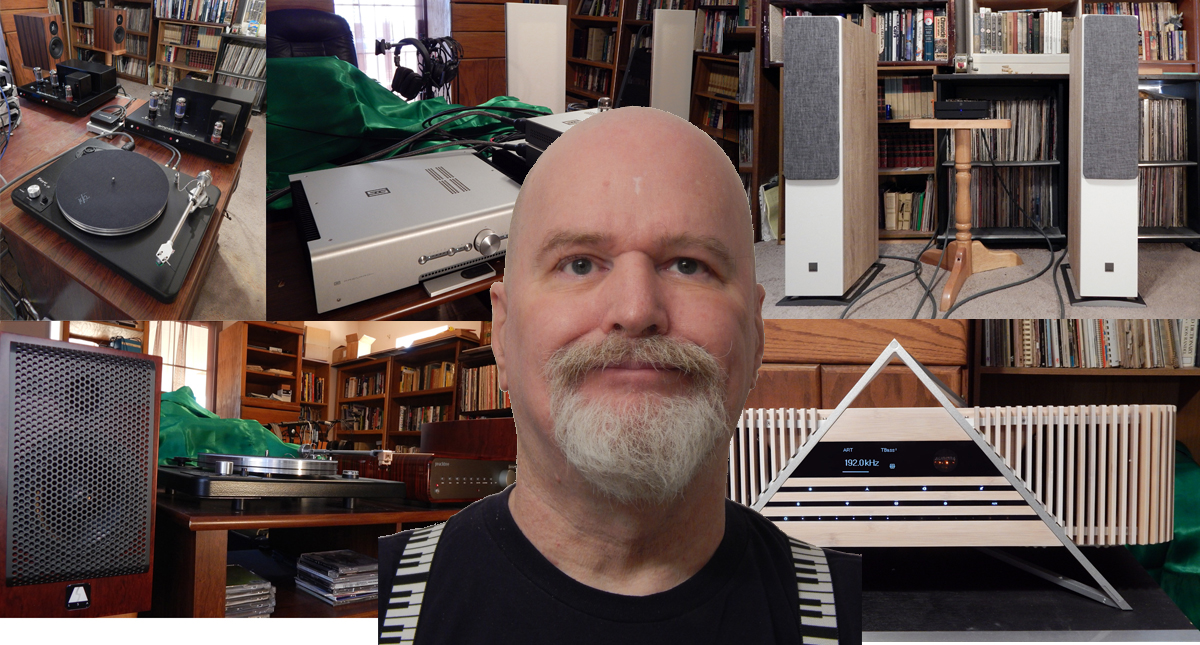Hi, it’s been a while since I have done one of these little monthly chats, a year to be exact, but the glut of post-pandemic HiFi shows and the demands of writing for and editing two magazines put such a weight on my time that I stopped doing them, but now I want to start them again.
With the ever-growing move from loudspeakers to personal audio it seems mind-boggling that there are so few binaural recordings. This is exceptionally frustrating when you discover that some audiophile recording companies are making all their recordings binaurally and remixing them for two-channel loudspeaker, and now they are remixing those remixes to create “Headphone Mixes” rather than just releasing the original binaural recordings.
The other day while doing a review I brought up some of my old recordings on Bandcamp (https://garyalanbarker.bandcamp.com/album/departure-from) and noted that even on mono recordings I could hear the soundstage which made me realize why binaural recordings are such a rarity.
There are two basic reasons really. The primary reason is that the majority of music listeners don’t know what soundstage is, much less care about it, and fewer still know about binaural recordings, in other words, there is very little impetus to create them. The second reason is one of practicality, as it would require a fundamental change in the way that most music is recorded.
In the ‘50s and ‘60s, the majority of recording engineers were audiophiles trying to reproduce the original performance as accurately as possible, this all changed when multi-track recording was invented. That is not to say that the audiophile recording engineers went away, they just moved into the classical music arena where people still cared about such things. In fact, most of the advancements in recording came from that sector, such as surround sound, direct-to-disc, and digital recording itself.
The dirty little not-so-secret of the recording industry is that the majority of recordings are mixed binaurally (EG: using headphones though loudspeakers are usually used as a reference) and most recordings are in mono (EG: recorded with a single microphone, or patched directly into the mixing board though many electronic instruments have stereo outputs which may be recorded on separate tracks), the stereo image is artificially created by the recording engineer with the exception of the rare two (or three) mic stereo or multi-channel (as opposed to multi-track) live recording (the classical music scene continued to record multi-channel QS recordings long after the pop music arena gave it up as a gimmicky fad though multi-channel music recording is starting to have a comeback).
Soundstage is not intentional, it’s not even an afterthought, again except in the above-mentioned rare live recording, it is purely accidental. Which brings us to the difference between imaging and soundstage. Imaging is the placement of the instruments in the room and is created by relative volume in the different channels (louder is closer, quieter is farther away), soundstage is the room itself and is created by the sound of the individual instruments reflecting off the four walls (or however many walls there are) and arriving at the microphone at slightly different times with different levels of energy and phase. This is why reverb is often used, generally on the vocal, to create a sense of space. This is also why even a mono recording has a soundstage, and ultimately why a multi-track recording has a soundstage, it is the summation of the soundstages of each instrument. This is further enhanced by how the instruments are miked for recording, usually vocal is close miked with a touch of reverb so it sounds closer to the listener and farther from the walls.
This is all relatively easily controlled in a recording intended for two-channel loudspeaker or multi-channel loudspeaker, but for a binaural recording, each instrument would need to be miked binaurally, which means two tracks for each and the use of binaural microphones. This is because the phase of the soundstage is 80 to 90 degrees off, and there is no delayed crosstalk with headphones to create depth of field.

There are two types of binaural microphones, there is the standard stereo microphone, which is a microphone with two elements and a barrier between to allow you to record two sides of the room simultaneously with minimal crosstalk, which is good for stereo loudspeaker recordings but not so good for binaural listening which needs the delayed crosstalk. The second and proper setup for our purposes is an artificial head with special microphones built into the ears, these are actually intended as test beds and are often used for testing headphones, but are also great for binaural recording as the sound and soundstage hit the microphones in proper phase for a binaural soundstage. This would be cumbersome, to say the least, for close-micing use in a studio. Add to this the fact that soundstage is exactly the opposite of what the recording engineer is trying to achieve in a studio environment, who is trying to isolate each instrument so that he can fully control the sound.
On the positive side, there are software solutions to the issue, but this of course takes us back to our initial issue of interest. Unless there is a significant rise in demand for binaural recordings, which also means a significant rise in awareness of binaural recordings and the advantages of a proper soundstage, it is not likely that we will see many recording artists offering them, especially in the current climate of the rise of home recording and independent artists and recording labels.
Well, that’s it until next month, have a happy holidays, and remember it’s all about the music.








Leave a Reply
Want to join discussion?
Feel free to contribute!